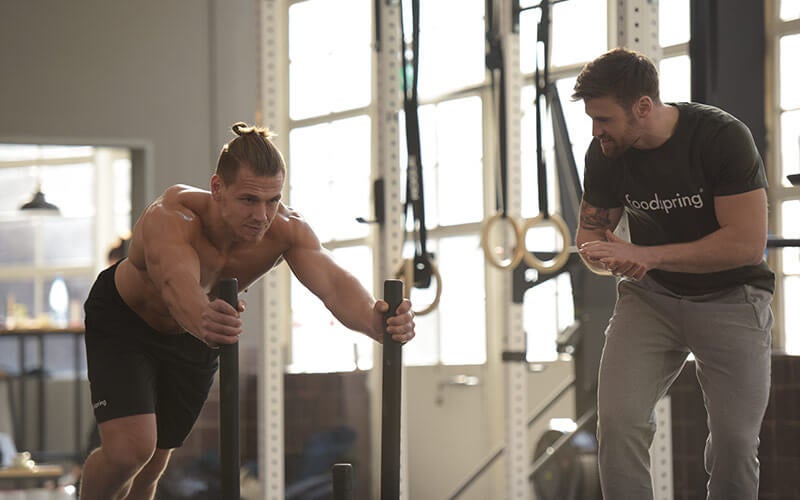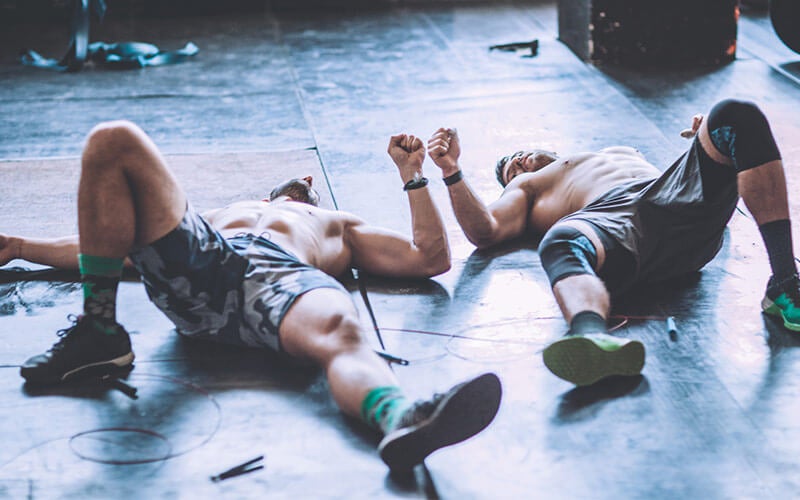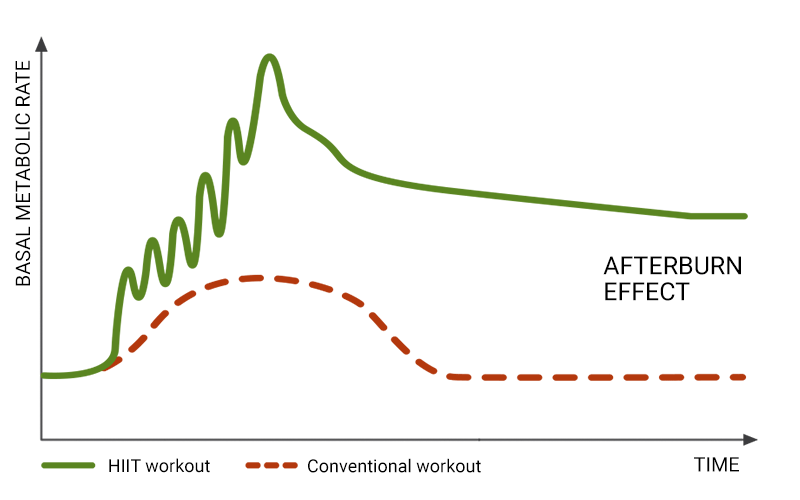The afterburn effect: Truth versus myth
 ©foodspring
©foodspring
If you’ve ever practiced strength training or an endurance sport like running, you’ve probably heard of the afterburn effect. In this article, we explain exactly what it is and what you need to know to help you reach your health and fitness goals.
Would you believe us if we told you that you’ll continue to burn calories after a workout, even if you’re just watching TV? It’s the truth, and it’s all thanks to this well known post-exercise effect.
What is the afterburn effect?
The afterburn effect is when your caloric expenditure remains elevated after training. In science speak, it’s known as “excess post-exercise oxygen consumption,” or EPOC.
Though that sounds complicated, it really isn’t. Basically, your muscles use a lot more energy during exercise than at a resting state. That energy comes from a mix of carbohydrates, fats, and a bunch of oxygen. As you exercise, your breathing gets heavier, heartbeat quickens, and pulse rate increases in order to provide each muscle with enough oxygen to keep your body running efficiently. Simply put, all the parts of your body have to work harder than at rest, and this increases your energy expenditure, even after you’ve stopped working out.

Your pulse rate and caloric expenditure are linked
Your pulse rate and caloric expenditure will increase differently depending on the type of exercise you do. Length and level of intensity of a training session both determine how your body will react. For example, a leisurely jog at low exercise intensity won’t pump your heart rate nearly as quickly as sprinting.
But short, intense interval training like HIIT and Tabata will! After exercising at such a high intensity level, your body needs more time to return to normal. And during that period, the afterburn effect kicks in and continues to burn calories while you get to kick back and relax.
The intensity of the afterburn effect depends on the intensity of the workout.
It’s all about the amount of effort you put into your training. For example, the afterburn effect is supercharged after high intensity interval training (HIIT).
The chart below demonstrates exactly how your basal metabolic rate (BMR) will vary between HIIT workouts and a classic strength training session (as well as how long it will take your body to return to normal).

Rapidly raising your BMR in quick, high intensity intervals greatly slows its return to a normal rate. As a result, you’ll continue burning calories and fat well after you’ve finished working out.
Meanwhile, if you’re keeping to a budget, we have free workouts for you, too. Choose which part of your body you want to work, how much time you have, and your fitness level, and get a HIIT or Tabata workout that’s just right for you.
How EPOC works
The afterburn effect takes place within 48 hours after you finish exercising. The process is divided into three phases, during all of which your body continues to look for additional energy sources.
Phase 1: This phase takes place just after an intense effort and lasts for about an hour. It eliminates stress hormones from the body by regulating the circulatory system. By the time it’s over, your breathing, pulse, and metabolism are well on their way back to normal.
Phase 2: Now that your metabolism has mostly calmed down, your body can focus on repairing your muscles. As your muscles process protein to recover, your caloric expenditure remains higher than normal. This is the ideal moment to have a high-protein snack to help your muscles heal quickly.
Phase 3: While your caloric expenditure is no longer as high in the third phase, it will still be slightly elevated thanks to post-workout muscle tension and soreness.

What can you eat to stimulate EPOC?
Though you might have heard that carbohydrates prevent the afterburn effect, there’s no truth to this myth. Whether or not you eat carbohydrates, the fat burning will still occur after an intense training session.
On the other hand, it’s possible that carbs may minimize the amount of fat our bodies metabolize after exercise. If you’re worried about this getting in the way of your weight loss goals, reach for a post-workout snack that’s low in carbs and high in protein. The protein is what will help your muscles recover, after all. Carbs are a solid choice before workouts and compatible with weight loss benefits, as carbs are converted into energy during intense exercise.
Whatever your objective, though, you should plan to eat a full meal not long after you’re done at the gym. Otherwise you may be uncontrollably hungry in two to three hours.
If, on the other hand, you have absolutely no appetite after your workouts, a protein shake made with our Whey Protein is the easiest way to get the nutrients you need. Our Shape Shake 2.0 is also a high-protein, low-calorie option that’s available in a bunch of different flavors.
How many calories does EPOC actually burn?
This depends on many factors, like age, height, weight, gender, and fitness level, and the length and intensity of your workouts.
All in all, it will cause you to burn about 10 percent of the number of calories burned during the workout. If you burn 500 kcal while working out, you’ll burn an additional 50 in the hours afterward. Though this may not sound like much, the fat loss really adds up over time.
For example, if you work out three times per week and burn 50 extra calories afterwards each time, that’s 150 total calories a week with no extra effort. That adds up to calorie burning additions of 600 per month and 7200 per year. Along with a healthy diet, you’ll reach your fitness goals in no time.
Our Summary
- The afterburn effect causes you to continue burning calories after training.
- It can last up to 48 hours after training.
- Though it may not seem like a lot, it will help you reduce caloric intake over the long run.
Sources for this article
We at foodspring use only high-quality sources, including peer-reviewed studies, to support the facts within our articles. Read our editorial policy to learn more about how we fact-check and keep our content accurate, reliable, and trustworthy.

































